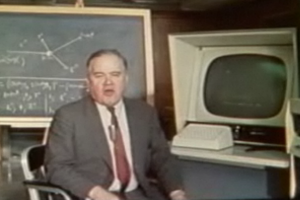 I was poking around in Nathan Yau’s FlowingData blogs and found a historical gem. On January 1, 2008, Nathan wrote a blog on John Tukey, the pioneer in exploratory statistics, highlighting his role in the early use of computers for data visualization!
I was poking around in Nathan Yau’s FlowingData blogs and found a historical gem. On January 1, 2008, Nathan wrote a blog on John Tukey, the pioneer in exploratory statistics, highlighting his role in the early use of computers for data visualization!
In 1972 using “32 buttons and a lightpen” on “an Information Display’s IDIIOM refresh CRT driven by a Varian 620/i minicomputer linked to an IBM 360/91″, Tukey developed the PRIM-9 program to do multivariate analysis. It handled up to 9 dimensional data with the functions of “picturing, rotation, isolation and masking”.
A paper in May of 1974 describes the operation of his program. Particularly insightful is the Discussion section at the end, in which Tukey gives his best practices for discovering meaningful relationships hidden within the 9 dimensions of the data. Nathan suggests that the GGobi visualization software by Hadley Wickham owes its heritage to Tukey’s PRIM-9.
The real treat is a 25-minute video from 1973. Take the time for watch this! Despite the awkwardness of ancient computer equipment, Tukey teases out the patterns in what initially appear as random dots.
Toward the end of this video, I was stuck with the implications of Tukey’s work for Immersive Analytics. Here is one of pioneers of modern data analysis showing us the value of 3-D visualizations…as an early approach to immersing oneself in the data. And this was over forty years ago!
Archive Blog originally posted April 6, 2012 on ImmersiveIntelligence.com
